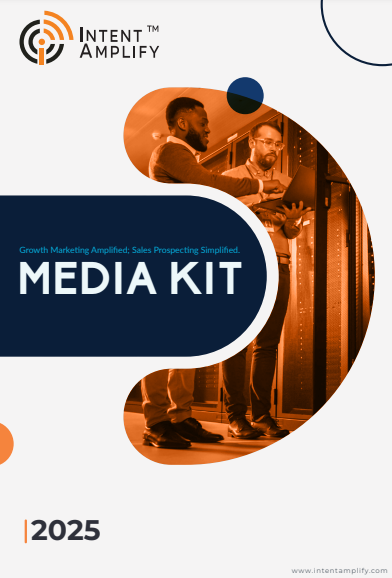Shadow AI in B2B impacts revenue, compliance, and operations – it’s no longer niche but a major strategic concern. In short, unsanctioned AI tools aren’t just risks – they reveal unmet needs, spark ideas, and streamline workflows.

What Is Shadow AI and Why B2B Companies Should Care
- Last updated on: October 6, 2025
AI has been quite a popular topic these days. However, the truth is, it is no longer something that can only be found in the IT departments or in some kind of formal initiatives. Employees of sales, marketing, and operations are increasingly adopting AI tools for their own use – most of the time, they are doing it without the knowledge or the supervision of the department. This unauthorised deployment of AI is termed as Shadow AI in B2B.
Shadow AI in B2B is not a bad thing in itself, but it comes with invisible hazards. When software programs work beyond the scope of official governance, issues related to data security, compliance, and operational alignment can arise. At the same time, these nonconforming tools may point to overlooked requirements and the potential for the saving of the unused efficiency.
What Is Shadow AI in B2B?
Shadow AI in B2B is about AI-powered tools and applications that employees secretly install and use without getting permission from IT or the management teams. In contrast to officially supported AI projects, where security and service are part of the company standard workflow, Shadow AI remains unnoticed and thus often outside the control or at least partially invisible to it.
Typical instances are generative AI chat tools, AI-powered analytics platforms, workflow automation apps, or even experimental SaaS solutions employees find on their own. An unsanctioned AI tool may be used by marketing teams to write emails, while AI in sales could be used to discover prospects without IT’s knowledge.
Such departments as marketing, sales, operations, and even finance are frequent adopters of these tools because they promise increased productivity, faster decision-making, or simpler insights. However, the absence of oversight can lead to data governance, compliance, and alignment with broader business goals being jeopardised quite often.
The Growing Prevalence of Shadow AI in B2B Enterprises
The adoption of Shadow AI in B2B is on the rise and for good reason. Employees are under constant pressure to meet performance goals, accelerate campaigns, and deliver insights faster than traditional processes allow. Unsanctioned AI tools promise to bridge these gaps, often providing immediate solutions where official IT or AI initiatives lag.
80% of organisations show signs of Shadow AI activity, with employees using AI tools for various tasks, often without IT oversight. This widespread adoption spans departments including sales, marketing, operations, and finance, demonstrating that Shadow AI is becoming a standard part of enterprise workflows.
Why is this happening? Speed, accessibility, and simplicity. Traditional enterprise AI deployments can be slow, complex, and require cross-department approvals. Shadow AI in B2B, on the other hand, is easy to adopt, often cloud-based, and can deliver immediate results.
Risks of Shadow AI in B2B
Despite the fact that the use of Shadow AI in B2B can be a significant productivity driver, it still brings huge risks that those in charge of the enterprise can’t ignore. The lack of formal oversight means these tools are often working outside of the established security protocols, compliance frameworks, and governance structures, which in turn exposes the company to being vulnerable.
1. Security and Compliance Concerns
New research has claimed that three in five (59%) workers say they use AI tools which have not been approved by their company, otherwise known as Shadow AI. Adding to the risk, 33% of workers use AI without informing their managers, raising serious questions about cybersecurity, regulatory compliance, and organisational trust. These behaviours can inadvertently expose sensitive data, including customer information, internal documents, and proprietary company data.
2. Operational Inefficiencies and Misalignment
The absence of centrally controlled oversight leads to Shadow AI that induces inefficient and disconnected workflows, repeated work, and inconsistent data use. Team members might be using different versions of the same tool or dataset without even realising it, thus leading to the implementation of strategies that are off-target and lost chances of being optimised.
3. Brand Reputation and Communication Risks
Products that have not been authorised and use AI are likely to be different from a company’s tone or messaging instructions. To give an example, a generative AI tool might create a customer-facing email that uses inappropriate language or tone without the knowledge of the company, and as a result, the company will be harmed without even realising it.
4. Financial Implications
On top of the security and operational challenges that are directly exposed, Shadow AI can also have financial side effects. Organisations experiencing breaches linked to unauthorised AI use incur an average additional cost of $670,000, bringing the total breach cost to approximately $5.01 million, compared to the global average of $4.44 million. Moreover, the scattered presence of unapproved software can result in redundant software purchases, and so without it, the IT spending would still continue to rise.
Opportunities Hidden in Shadow AI in B2B
B2B Shadow AI is a risk to the company, but it is still an opportunity that this staff strategist can take advantage of and even turn into a win for their company. The employees sometimes resort to unsanctioned AI technologies to solve real problems more quickly, thereby bringing up the deficiencies of the existing workflows or technology. The leaders, by recognising these trends, can get actionable insights.
1. Identifying Unmet Needs
Typically, the implementation of Shadow AI is a signal of the areas that show where employees have a need for more efficiency or better solutions. The use of a marketing team through the help of rogue AI in content creation might be the reason why the standard content automation tools are not enough. The sales team that is using AI for lead scoring without your permission merely shows that the process of data-driven needs to be more agile and flexible by robotics.
2. Early Innovation Signals
Shadow AI can become a prototype for new AI features. By keeping an eye on these tools, the IT and business leaders get early indications of the AI technologies that are the most efficient in achieving the results and, therefore, guiding enterprises in what should be their next AI investments.
3. Controlled Growth Advantage
Through adopting the governance-first approach, a company can change Shadow AI experimentation into sanctioned initiatives. This gives the innovative staff a chance to innovate more while the company still keeps the risks at bay, thus the AI adoption can be aligned with compliance and the company’s strategic goals.
How Shadow AI in B2B Impacts Marketing and Sales Teams
Shadow AI in B2B extends beyond IT, impacting marketing and sales teams, with both positive and negative effects. For executives in charge of revenue and brand, recognising these impacts is crucial.
Influence on Lead Generation and ABM
Sales and marketing teams may secretly use AI tools for prospecting, cold emails, and faster lead scoring. This can accelerate the pipeline but may weaken messaging consistency and targeting accuracy. Unauthorized AI-generated emails may clash with brand tone, ABM strategy, and recipient expectations.
Misalignment With KPIs and Reporting Metrics
Performance monitoring is tough when teams rely on unapproved AI tools. On the one hand, marketing initiatives might generate engagement metrics that are higher than the real ones. On the other hand, sales pipelines can be presented as more robust than they actually are. This divergence causes managerial staff to find it hard to evaluate the return of investment (ROI) correctly or to alter tactics on the spot.
Governance Strategies for Managing Shadow AI in B2B
Managing Shadow AI in B2B is a task that involves a preemptive, well-ordered approach that skillfully combines the aspects of innovation and control. Although quite often, the first reaction of the management to the discovery of the shadow tools is to forbid their usage, which negatively influences the productivity of the enterprise, they are still able to benefit from those tools by implementing certain governance measures without exposing their organisation to the risks.
1. Establish Clear AI Policies
First of all, indicate which AI-based tools the company may use, and set the data handling, security, and compliance standards.. The building blocks of the policy should not only be limited to allowing AI solutions that fit enterprise norms, but also be able to encompass upcoming technologies.
2. Educate Employees
Knowledge is the most important aspect. Educate the workers on the dangers of the utilisation of unsanctioned AI tools, and also on issues of data privacy and regulatory requirements. Always cite instances of proper usage and suggest that workers first get a go-ahead from the supervisor before using new tools.
3. Implement Monitoring and Auditing
Internally controlled monitoring systems can be used as instruments to uncover unintentional AI usage and evaluate the potential risks to the organisation. Frequent professional inspections and reviews ensure AI-generated outputs meet company standards and workflows. Supervision also reveals which tools employees find useful, guiding decisions on future AI adoption.
4. Encourage Cross-Department Collaboration
Effectively managing “Shadow AI” requires collaboration among IT, marketing, sales, and operations teams. Combined management ensures AI adoption supports business goals while preventing overlap and maintaining brand consistency.
5. Integrate Shadow AI Into Strategic AI Initiatives
In fact, don’t consider Shadow AI a threat only, but rather treat it as an Idea Lab for AI transition of industrial-class. The blending of the popular unsanctioned tools with the pre-approved workflows will have tech firms achieve the triple effect of raising operational efficiency, fuel the upturn of revenue, and infusing innovation with accountability.
Shadow AI in B2B and Enterprise Growth
Shadow AI in B2B is a conundrum for enterprise leaders, as it is, on one hand, the factor that spurs growth when used wisely, but on the other hand, it is the source of serious risks if it is not controlled. The executives must balance between these two to safeguard their revenue and still be able to lead with innovation.
1. Impact on Pipeline Growth and Revenue
Unmanaged Shadow AI can fragment workflows and data, slowing lead conversion and reducing campaign effectiveness. By the same token, if these tools are well-regulated, they can make prospecting faster, improve personalisation, and also drive marketing automation to the highest level; thus, pipeline growth will be supported directly.
2. Strategic Advantage for Early Adopters
Enterprises managing Shadow AI effectively gain the ultimate prize: a strong competitive advantage. By identifying unauthorized tools driving results, companies can integrate them officially, ensuring compliance and effective technology use. This method turns the security threat, which was previously latent, into an additional measurable business advantage.
Turning Challenges into Business Value
On top of that, shadow AI can be a great learning instrument. Observing employee involvement identifies where the agency’s AI program is falling short or simply lacks necessary features. Addressing these issues boosts organizational efficiency, ROI, and aligns AI initiatives with business goals.
Why B2B Leaders Need to Pay Attention to Shadow AI ?
However, tech, SaaS, fintech, and cybersecurity leaders often err in assuming Shadow AI will disappear on its own. They’re better off using existing resources to track, govern, and integrate these tools, turning challenges into business value.
FAQs
1. What is the difference between Shadow AI in B2B and traditional AI adoption?
Shadow AI in B2B refers to unauthorized employee AI use, unlike traditional AI, which is approved and integrated officially.
2. How can enterprises detect Shadow AI in B2B environments?
Organizations can detect Shadow AI by auditing software, monitoring data flows, surveying employees, and using IT tracking tools.
3. Which industries are most affected by Shadow AI in B2B?
Tech, SaaS, fintech, and cybersecurity sectors face the most impact due to rapid operations and heavy AI tool use.
4. Is Shadow AI in B2B beneficial if monitored effectively?
Certainly. With proper governance, Shadow AI can boost efficiency, spark innovation, and integrate smoothly with authorized systems.
5. What steps should B2B leaders take to manage Shadow AI effectively?
B2B leaders must set clear AI policies, train staff, monitor usage, and balance compliance with innovation.
Contact Us for Sales
Florence Harrison is a B2B content strategist at Intent Amplify®, with over 5 years of... Read more
Florence Harrison is a B2B content strategist at Intent Amplify®, with over 5 years of experience converting deep industry insights into value-backed stories that drive intent-led lead generation. Her content combines audience intelligence, intent-driven strategy, and intelligent automation to drive pipeline expansion and speed engagement along the buyer journey. With her high-impact storytelling and subtle editorial approach, Florence creates content structures that build out positioning, drive up visibility, and drive decision-makers in competitive B2B markets. Read less




